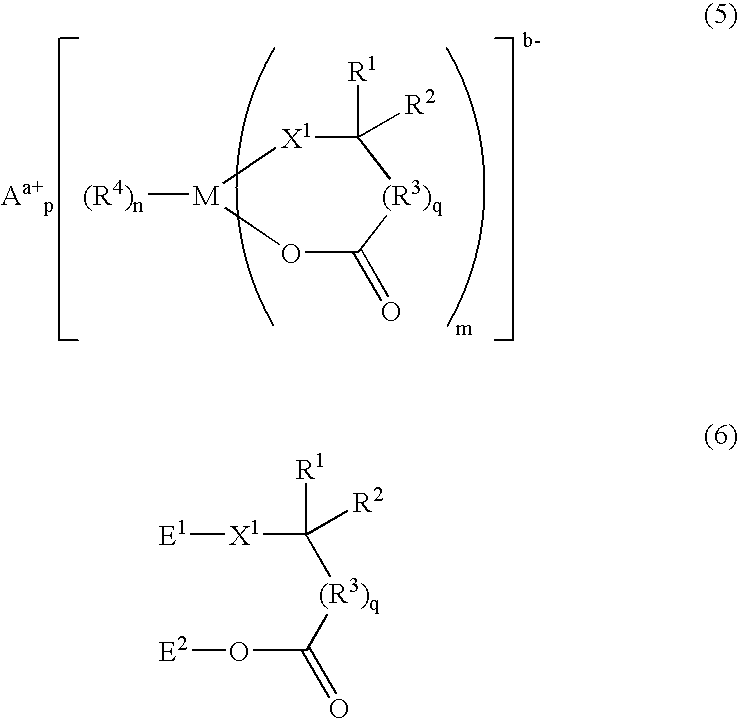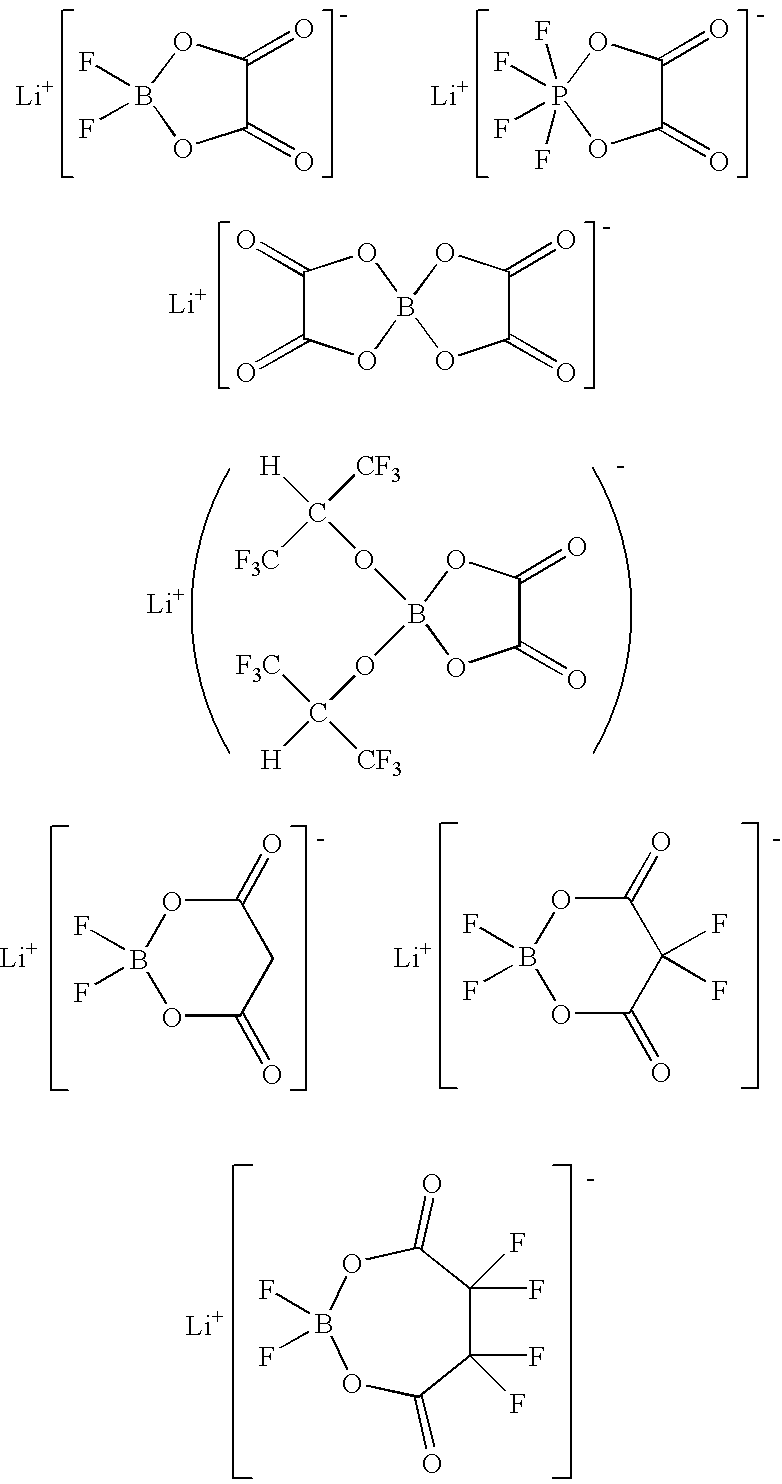Process for synthesizing ionic metal complex
- Summary
- Abstract
- Description
- Claims
- Application Information
AI Technical Summary
Benefits of technology
Problems solved by technology
Method used
Image
Examples
example 1-1
In a glove box having an atmosphere of a dew point of −50° C., 1.31 g of oxalic acid, 1.37 g of lithium tetrafluoroborate (LiBF4), and 20 ml of dimethylcarbonate were mixed together, followed by stirring sufficiently. With this, lithium tetrafluoroborate was dissolved completely, but oxalic acid was not. Therefore, the mixture became in the form of slurry. Then, 1.38 g of silicon tetrachloride (reaction aid) were slowly added to the mixture at room temperature with stirring. At the same time when this addition was started, a gas was generated violently. With this, the undissolved oxalic acid was dissolved, and the reaction proceeded. After the addition of silicon tetrachloride, stirring was continued for 3 hr. It was judged that the reaction had terminated by confirming that the generation of the gas stopped completely. Dimethyl carbonate was removed from the resulting reaction liquid at 40° C. under a reduced pressure of 133 Pa, thereby obtaining 2.09 g of a white solid as a produc...
example 1-2
In a glove box having an atmosphere of a dew point of −50° C., 1.31 g of oxalic acid, 1.37 g of lithium tetrafluoroborate (LiBF4), and 20 ml of dimethylcarbonate were mixed together, followed by stirring sufficiently. With this, lithium tetrafluoroborate was dissolved completely, but oxalic acid was not. Therefore, the mixture became in the form of slurry. Then, 1.30 g of aluminum trichloride (reaction aid) were slowly added to the mixture at room temperature with stirring. At the same time when this addition was started, a precipitate of a milky color was generated. After the addition of aluminum trichloride, stirring was continued for 3 hr. Then, the precipitate was separated from the reaction liquid by filtration. Dimethyl carbonate was removed from the resulting reaction liquid at 40° C. under a reduced pressure of 133 Pa, thereby obtaining 2.09 g of lithium difluoro(oxalato)borate (yield: 99.5%).
example 1-3
In a glove box having an atmosphere of a dew point of −50° C., 3.93 g of oxalic acid, 1.37 g of lithium tetrafluoroborate (LiBF4), 0.76 g of lithium fluoride, and 50 ml of ethyl methyl carbonate were mixed together, followed by stirring sufficiently. With this, lithium tetrafluoroborate was dissolved completely, but oxalic acid and lithium fluoride were not. Therefore, the mixture became in the form of slurry. Then, 3.03 g of trimethoxyborane ((CH3O)3B; reaction aid) were slowly added to the mixture at 0° C. with stirring. At the same time when this addition was started, the undissolved component started to dissolve. At the time when all the reagents were dissolved after the addition of trimethoxyborane, ethyl methyl carbonate was removed from the resulting reaction liquid at 0° C. under a reduced pressure of 133 Pa, thereby obtaining 6.28 g of lithium difluoro(oxalato)borate (yield: 99.9%).
PUM
 Login to View More
Login to View More Abstract
Description
Claims
Application Information
 Login to View More
Login to View More - R&D
- Intellectual Property
- Life Sciences
- Materials
- Tech Scout
- Unparalleled Data Quality
- Higher Quality Content
- 60% Fewer Hallucinations
Browse by: Latest US Patents, China's latest patents, Technical Efficacy Thesaurus, Application Domain, Technology Topic, Popular Technical Reports.
© 2025 PatSnap. All rights reserved.Legal|Privacy policy|Modern Slavery Act Transparency Statement|Sitemap|About US| Contact US: help@patsnap.com



